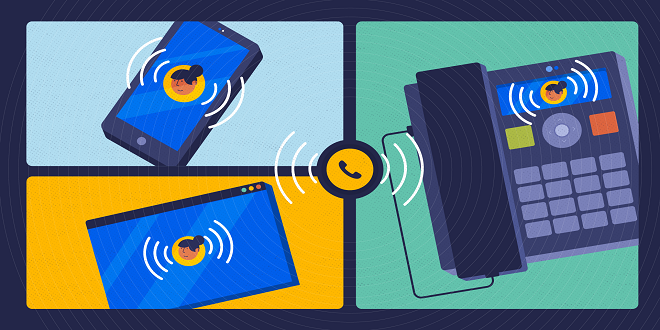7 Essential Features A Professional Virtual Phone System Must Use

Telephone systems are an essential part of running a business. Phone systems allow you to communicate with customers, employees, partners, and other business associates. Since the days of corded handsets and rotary phones, virtual phone software has come a long way. Virtual phone software now offers many benefits and features that are vital for every business.
Virtual phone systems are telecommunication systems that allow businesses to manage their calls via a cloud-based platform. They can also have a presence at multiple locations without having to purchase expensive equipment. Virtual phones are essential tools for all businesses, because they improve communication and efficiency. Virtual phone systems come in many forms, but they are not all created equal.
The seven most important features a Virtual Phone System must have;
-
Virtual Voicemail
Virtual Voicemail allows you to listen from any device at any time to your voicemails. You can delete, archive, and share your voicemails with others. This feature is great for companies with employees who travel a lot. It allows them to keep connected and manage voicemails from anywhere.
-
Call recording
Call recording can be a great tool to improve customer service and training employees. You can use it for compliance purposes. You can record all calls, both incoming and outgoing, so you can later listen to them. You can choose to either record specific calls or set up an automatic call recording. You might want to automate call recording if your call center has one. This will ensure that all calls are recorded automatically.
This feature also allows businesses to record calls for quality and training purposes. This feature can be used to ensure that all calls are handled professionally and correctly. You can record both incoming and exiting calls to help you listen back and pinpoint areas for improvement.
-
Automatic Call Distribution
This is a great feature to ensure calls are answered quickly. You can route calls to the appropriate agent, department or individual using this feature of the virtual phone system. This feature can be used to route calls to next available agents or departments. This feature is great for improving efficiency and customer service.
-
Interactive Voice Response
An Interactive Voice Response (IVR), system should be part of every phone system. This system allows callers use their voice to navigate through a variety of options. An IVR system can be used to route calls to the right department if your company has customer service representatives. Your customer service staff will be able to save time by not having to manually route calls. This will make it easier for callers to reach someone quickly and will improve their experience.
-
Caller ID
Caller ID is an essential feature in any virtual phone system. This allows you to see the number and name of the caller before you answer. This feature is great for screening calls and ensuring that you only answer calls from people you know. It can also route calls to the right department or individual.
-
Ring groups
Ring groups can be a great way of ensuring that calls get answered promptly. This feature allows employees and departments to be grouped together so that calls can ring on all the phones within the group. You could create a ring group to support customer service so that all customer calls ring on the phones within that group.
-
Extension Dialing
This feature is an excellent way to save time while making calls. This feature allows you to dial an extension rather than the whole number. If you know your colleague’s extension number 100, you can dial 100 instead. Businesses that make many calls will appreciate this time-saver.
These steps will help you set up a virtual telephone system for your company.
- Decide how many phone lines are needed. This will depend on your business’s size. A small business may only require one or two lines. If you own a large company, however, you might need 10 or more lines.
- Make a decision about the features that you require. It is not worth paying for features that you won’t use. These features are available at a monthly cost. As VoIP service requires you to be connected to the internet, don’t forget to do this.
- Find a provider who offers these features. You have many options when it comes to virtual phone systems. Take your time and find the one that best suits your needs.
- Pricing and plans – Virtual phone softwares come in different prices. Before you make a decision, compare pricing and plans.
- Register for a plan – It is simple to sign up for a program. You can sign up for a plan online with most providers by following these simple steps.
- Register for an account The process is easy and takes only a few minutes. Before you begin the installation process, a manual is included with your virtual phone system.
- Get started with your system! Once you have created your account, you are ready to use your system and reap the benefits of a virtual telephone system for your company.
Conclusion
There are many other features that a virtual telephone system can offer, like a virtual attendant or greeting from an auto-attendant, but these are the essential features that any professional virtual phone system should have. There are many phone service providers available, but not all are created equal. Some systems offer more important features than others. Take your time to choose the one that best suits your needs. These are the features to look out for when you’re looking at virtual phone systems for your business.





